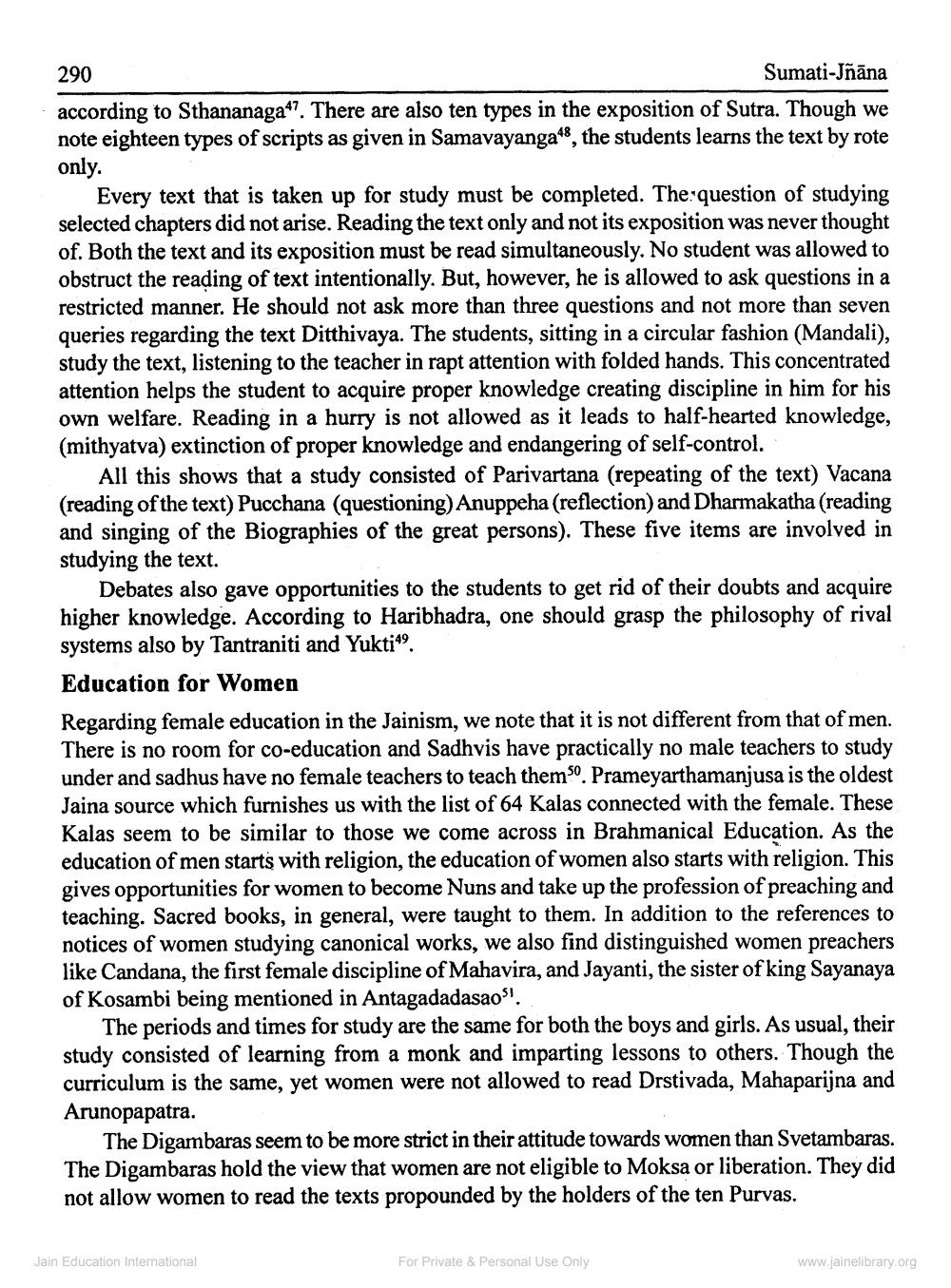________________
290
Sumati-Jñāna
according to Sthananaga47. There are also ten types in the exposition of Sutra. Though we note eighteen types of scripts as given in Samavayanga48, the students learns the text by rote only.
Every text that is taken up for study must be completed. The question of studying selected chapters did not arise. Reading the text only and not its exposition was never thought of. Both the text and its exposition must be read simultaneously. No student was allowed to obstruct the reading of text intentionally. But, however, he is allowed to ask questions in a restricted manner. He should not ask more than three questions and not more than seven queries regarding the text Ditthivaya. The students, sitting in a circular fashion (Mandali), study the text, listening to the teacher in rapt attention with folded hands. This concentrated attention helps the student to acquire proper knowledge creating discipline in him for his own welfare. Reading in a hurry is not allowed as it leads to half-hearted knowledge, (mithyatva) extinction of proper knowledge and endangering of self-control.
All this shows that a study consisted of Parivartana (repeating of the text) Vacana (reading of the text) Pucchana (questioning) Anuppeha (reflection) and Dharmakatha (reading and singing of the Biographies of the great persons). These five items are involved in studying the text.
Debates also gave opportunities to the students to get rid of their doubts and acquire higher knowledge. According to Haribhadra, one should grasp the philosophy of rival systems also by Tantraniti and Yukti49.
Education for Women
Regarding female education in the Jainism, we note that it is not different from that of men. There is no room for co-education and Sadhvis have practically no male teachers to study under and sadhus have no female teachers to teach them50. Prameyarthamanjusa is the oldest Jaina source which furnishes us with the list of 64 Kalas connected with the female. These Kalas seem to be similar to those we come across in Brahmanical Education. As the education of men starts with religion, the education of women also starts with religion. This gives opportunities for women to become Nuns and take up the profession of preaching and teaching. Sacred books, in general, were taught to them. In addition to the references to notices of women studying canonical works, we also find distinguished women preachers like Candana, the first female discipline of Mahavira, and Jayanti, the sister of king Sayanaya of Kosambi being mentioned in Antagadadasao11.
The periods and times for study are the same for both the boys and girls. As usual, their study consisted of learning from a monk and imparting lessons to others. Though the curriculum is the same, yet women were not allowed to read Drstivada, Mahaparijna and Arunopapatra.
The Digambaras seem to be more strict in their attitude towards women than Svetambaras. The Digambaras hold the view that women are not eligible to Moksa or liberation. They did not allow women to read the texts propounded by the holders of the ten Purvas.
Jain Education International
For Private & Personal Use Only
www.jainelibrary.org




